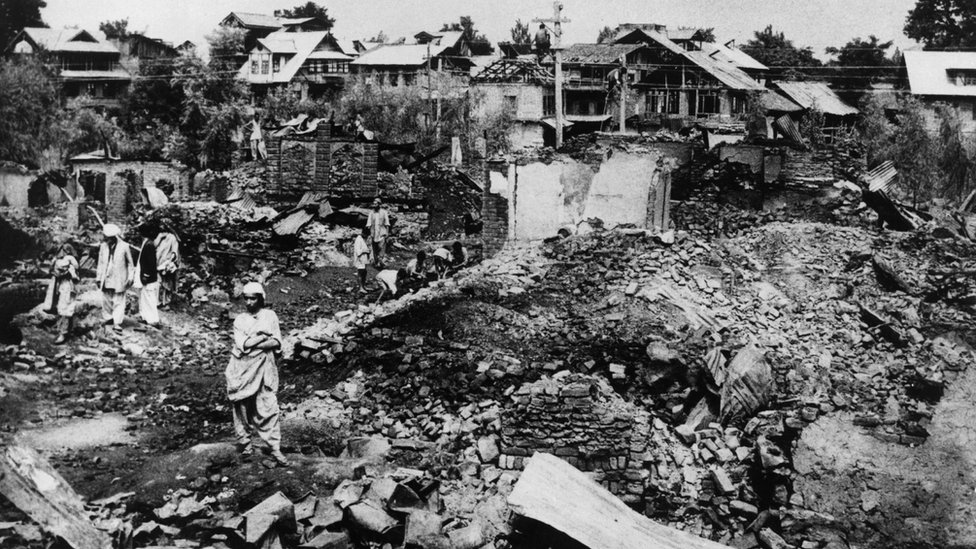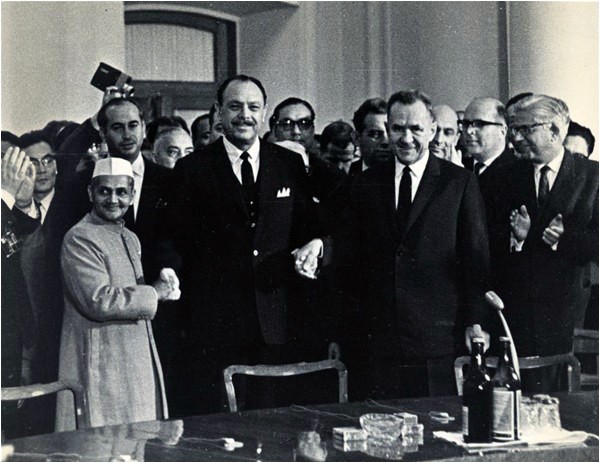Table of Contents
Introduction
The war of 1965 between India and Pakistan was another thorn in the relationship between the two countries. Why was the war of 1965 a debating point from the Indian perspective? The answer is the debacle of the Sino-Indian War of 1962.
India was still coping with the costly war and was not in a position to enter a new one. Pakistan saw this as an advantage. There were multiple reasons why Pakistan wanted a war against its arch-enemy:
- The Kashmir issue was Pakistan’s core agenda. They were heavily inclined towards Kashmir ever since the days of the partition.
- It was the humiliating defeat of India that made Pakistan believe it was the right time to strike.
- There was a revamp and reshuffling in the Indian Military and Ministry of Defence post the war in 1962.
- Due to the recent war with China, the Indian military was not in a position to move its troops from borders with China. Pakistan saw this as an opportunity to open a front in Jammu & Kashmir.
- Lastly, Pakistan had an inventory of technically advanced weapons that were much superior to what India had.
In this article, we will discuss the war of 1965, the operations that were carried out, and its outcome.
Rann of Kutch
The first glimpse of the war between India and Pakistan was seen in early 1965 when Pakistan’s forces began patrolling the area of Rann of Kutch under the control of the Indian army. By April 1965, there were few skirmishes between the Indian and Pakistan armies around the area.
The Prime Minister of India, Lal Bahadur Shastri, did not want to engage militarily due to the recent Indo-China war crisis.
The intermittent conflict came to end when the British Prime Minister urged the two countries to disarm and settle the dispute through a tribunal. The tribunal gave its verdict in 1968 where Pakistan was given 910 square kilometers of the territory of Rann of Kutch against the Indian wishes.
India Pakistan War of 1965 – Operation Gibraltar
Operation Gibraltar was initiated by Pakistan in August 1965 to create unrest in Kashmir. Thousands of Pakistani troops entered the Kashmir Valley (Indian-administered Kashmir) aiming to capture the strategic points and destroy the crucial communication channels. The operation was led by Pakistan’s Maj-Gen Akhtar Hussain Malik.
As per Maj-Gen AH Malik, he wanted to – “defreeze the Kashmir problem, weaken Indian resolve, and bring her to the conference table without provoking a general war”.
Operation Gibraltar was based on the idea of initiating armed rebellion with the help of the locals to capture parts of the Indian-administered Kashmir. The plan, however, did not work and there was no help from the local populace. The intruders mishandled the situation and even killed civilians which did not help Pakistan’s cause. Thus, Operation Gibraltar was a failure in the end as it could not garner the support it required.
Operation Gibraltar was named after the Port of Gibraltar from where the Muslim conquest of Spain was launched.

Courtesy – BBC
India Pakistan War of 1965 – Operation Grand Slam
After the failure of Operation Gibraltar, President Ayub Khan initiated Operation Grand Slam on 1st September 1965 with the attack on the Chhamb district. The Pakistani troops had an advantage over their arch-enemy as they carried advanced Patton tanks, whereas India was equipped with basic AMX-13 tanks.
As per Major AH Amin of Pakistan, the ratio of Patton tanks to AMX-13 tanks was 6:1.
Another plan of Pakistan was to attack Akhnoor esp. Akhnoor bridge to paralyze the communication between India and Kashmir valley. Akhnoor was also the crucial point of entry into the Poonch and Rajouri sectors.
Though the Pakistan army had an edge over India in terms of weapons, the determination of Indian forces was much greater.
There was a time when Pakistani troops were pushing back the Indian forces, but then, Maj-Gen AH Malik was replaced by Maj-Gen Yahya Khan as the commander of the operation which created confusion within the Pakistan army. The Indian army took advantage of the situation and called for reinforcements. By then, any move by Pakistanis was repelled by the Indian forces.
On 6 September 1965, the Indian forces opened a new front across the state of Punjab in West Pakistan. With no sufficient gain in the Kashmir region, Pakistan decided to send its troops to the Punjab area to counter India’s offensive that had taken a massive shape. The Indian army took over the Ichhogil canal and was nearing Lahore. Pakistan had no option but to retreat from Kashmir and focus on Punjab.
6 September in Pakistan is celebrated as “Defence of Pakistan day” commemorating the sacrifices made by Pakistani soldiers during the 1965 war and while defending their borders.
India Pakistan War of 1965 – Battle of Asal Uttar
The battle of Asal Uttar was fought between 8-10 September 1965. The Indian army’s motive was to recapture the Indian town of Khem Karan in Punjab from Pakistan’s clutches. The 3-day battle concluded with India gaining back control of the town. The Indian army also successfully defended Amritsar which was another top target for Pakistan. The battle, as per historians, is said to be a turning point in the war as it demonstrated the mettle of the Indian army. It also showed how advanced Indian forces were, tactically and strategically.
India Pakistan War of 1965 – The Conclusion
The war ended in a stalemate, though both countries claim that they were victorious. As per the experts, Pakistan was not able to achieve the objective with which it initiated the war. As per the statistics, by the end of the war, Pakistan had captured 550 square kilometers of Indian territory, while India had captured 1920 square kilometers of Pakistan’s territory. It can be safely said that India had an upper hand by the end of the war.
The US and the Soviet Union brokered peace between the two nations. A ceasefire was declared on 22 September 1965. By the early morning of 23 September 1965, the war came to an end.
Tashkent Agreement
- A peace agreement (Tashkent Agreement) was signed between India and Pakistan on 10th January 1966 to bring an end to the 1965 war.
- The Tashkent agreement was considered to be more of a permanent end to the war, though it was criticized by the people of both countries.
- The agreement made both Pakistan and India return to the pre-war boundaries.
- The agreement emphasized the proper exchange of Prisoners of War (PoW).
- As per the agreement, both countries had to return to pre-war CFL (Ceasefire Line or LoC) in Jammu & Kashmir.
- Both countries were encouraged to return to bilateral talks and continue their economic and diplomatic relations.
- As per the agreement, no nation was to interfere in each other’s internal matters.
Lal Bahadur Shastri, the then Prime Minister of India, died under mysterious circumstances after signing the Tashkent Agreement in Tashkent.

Courtesy – The Friday Times
Ayub Khan’s resignation
The then President of Pakistan, Ayub Khan was heavily criticized in Pakistan over the Tashkent Agreement. There were protests against Ayub Khan with people demanding the reason for signing the agreement. Initially, Ayub Khan maintained silence, but later he had to address the nation. By the time Ayub Khan could convince the people of Pakistan of why he signed the Tashkent Agreement, his image was already dented. Tashkent Agreement was one of the primary reasons why Ayub Khan had to resign. After his resignation, Ayub Khan was replaced by Pakistan Army Chief, General Yahya Khan.
Conclusion
As per the independent sources, around 3,000 Indian soldiers and around 3,800 Pakistani soldiers were killed in the war. The war was a stalemate, but many people think that Pakistan lost the war as they were not able to achieve the objectives with which they initiated the offensive. India, on the other hand, was able to occupy and snatch away Pakistani territory which was greater than what Pakistan could occupy of India. However, both India and Pakistan claim that they won the war of 1965.
The war of 1965 has been in the headlines because of the Tashkent Agreement and the mysterious death of Lal Bahadur Shastri, the then Prime Minister of India. The war did not decrease the animosity between the nations. India and Pakistan ended up fighting two more wars in the future i.e. Bangladesh Liberation War of 1971 and the Kargil War of 1999 in which India crushed Pakistan. The relations between the two nations have degraded since then. The bilateral talks have come to a standstill. There have been never-ending clashes of words and differences in interests in the international forum. It is hard to predict what holds in the future for the two countries and if their relationship will revive or worsen further.
FAQs
Though there was no end result of the war of 1965, many historians believe India came out to be victorious as it held the Pakistan region more than what Pakistan had captured from India.
It was Kashmir. Pakistan always wanted to capture Kashimir from India and make it an integral part of the country.
The primary reason of Pakistan was to hit India when they were reeling from the loss of Sino-Indian war of 1962. Plus, Kashmir was always their primary target.
CURATED & WRITTEN BY
AYUSH PANDYA
(AUTHOR – THE UNPRECEDENTED CULT)